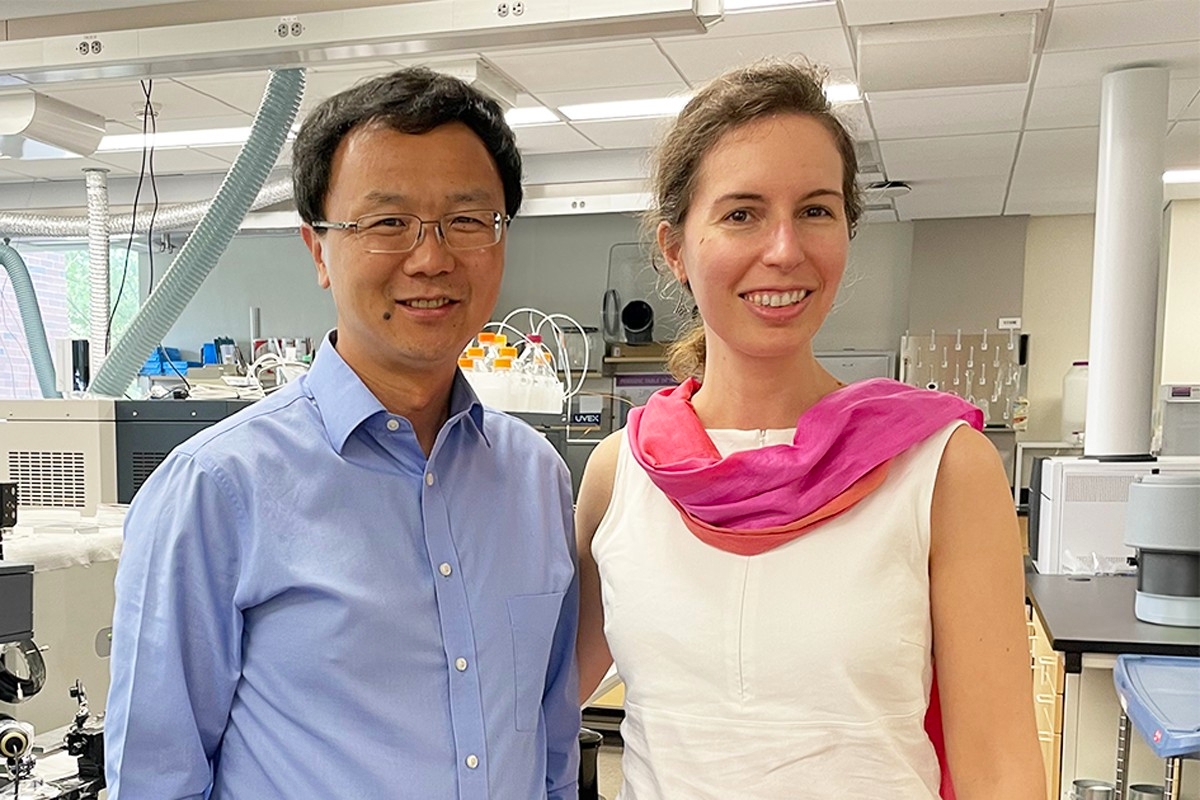Researchers examining disease infection in bystander cells, which are next to infected cells but are not infected themselves, following antimicrobial treatment, were granted nearly $500,000 from the Chan Zuckerberg Initiative to advance their work.
Zhibo Yang, an associate professor in the Department of Chemistry and Biochemistry at the University of Oklahoma, and Laura-Isobel McCall, an associate professor of bioanalytical chemistry at San Diego State University, are reuniting for their second major collaborative effort after securing an R01 grant from the National Institutes of Health, which looked at the mechanisms causing drug failure in cells infected with parasites, bacteria and viruses.
“Our new research originated from our previous collaboration. In our original work, we only focused on infected cells. But as we looked at the nearby cells, we noticed that their metabolism was getting closer to the infected cells,” Yang said. “Cells that are farther from the infected cells didn’t demonstrate this change in metabolism. This study will allow us to examine the spatial aspect of possible disease progression.”
McCall added, “Much of this work has historically focused on cancer, and for good reason. But diseases that are less well known still need to be better understood. We believe our research will help expand areas of study into other pathogens.”
In addition to funding this groundbreaking research, the award will also provide hands-on training opportunities for undergraduate and graduate students in Yang’s OU mass spectrometry lab and undergraduate students in McCall’s lab at SDSU.
“This award will also let other researchers know that single-cell mass spectrometry and mass spectrometry imaging can be used for many different kinds of important research,” Yang said. “We know we can do so much more with this technology.”
See the full list of the Chan Zuckerberg Initiative’s Measuring Metabolism Across Scales recipients and learn how Yang and McCall’s proposal stands out as the sole infectious disease proposal and the only Oklahoma-based research program selected during this round of funding.


